Abstract
Previous reports have suggested that a defect in serum complement may contribute to the increased susceptibility to infection shown by patients with sickle cell anaemia (SCA). In order to define the nature of any complement abnormality in SCA, we investigated the complement system in eighty-seven patients during asymptomatic periods, and analysed factor B turnover in a small sample. In these patients geometric mean serum concentrations of functionally active factor B and factor D, and of C3 and C4 protein (expressed as a percentage of normal reference serum) wer lower than in controls (78% vs 107%, P less than 0.001, 86% vs 103%, P less than 0.001, 91% vs 100%, P less than 0.01, 89% vs 105%, P less than 0.05 respectively). The ratio of the serum concentration of functionally active factor B to factor B protein was lower in patients than in controls (means 75% s.d. 16% vs mean 93%, s.d. 22% P less than 0.001), indicating a functional deficiency of factor B protein. In addition, the fractional catabolic rate of radiolabelled factor B was markedly increased in four out of seven asymptomatic patients studied, and was inversely related to the functional factor B concentration in serum (r = -0.59, P less than 0.05); factor B synthesis was uniformly increased. Complement activation was not related to the presence of circulating C1q binding material. We conclude that complement activation, rather than defective synthesis as previously suggested, contributes to the abnormalities in complement componenet concentration and function in asymptomatic subjects with sickle cell anaemia.
Full text
PDF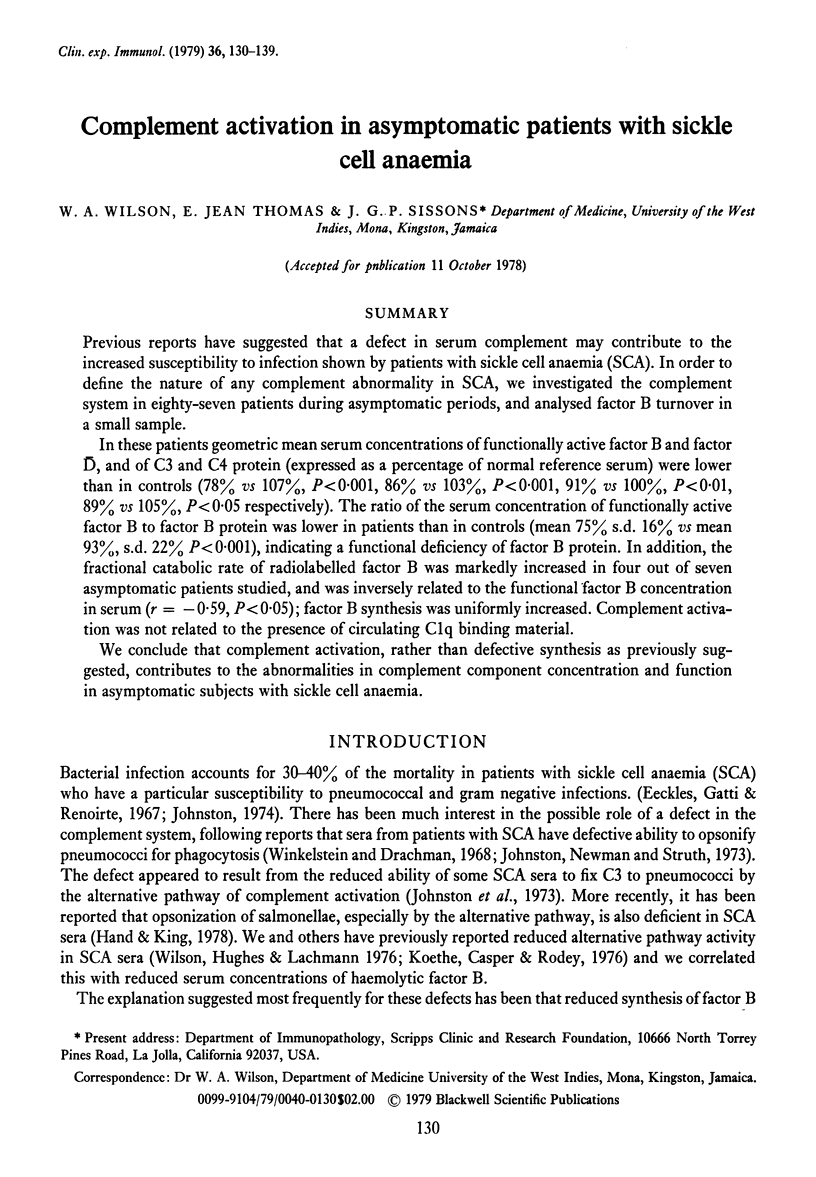
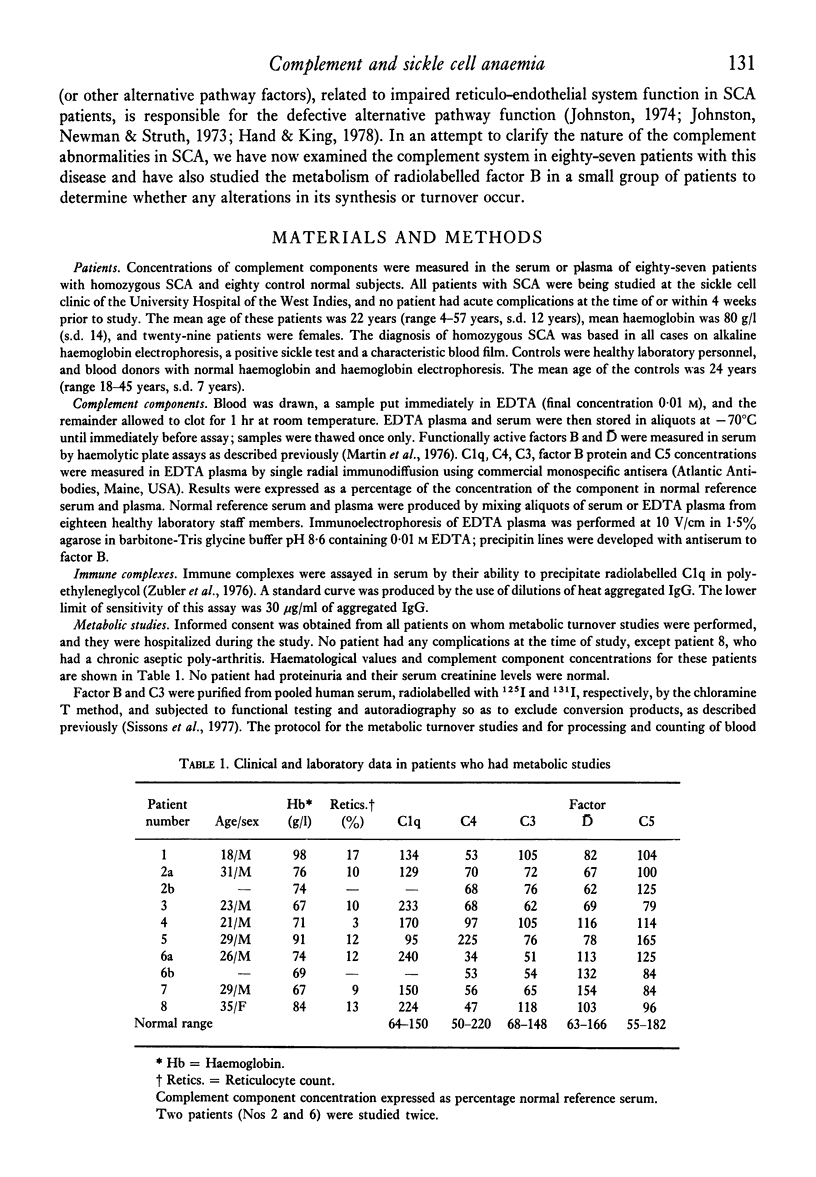
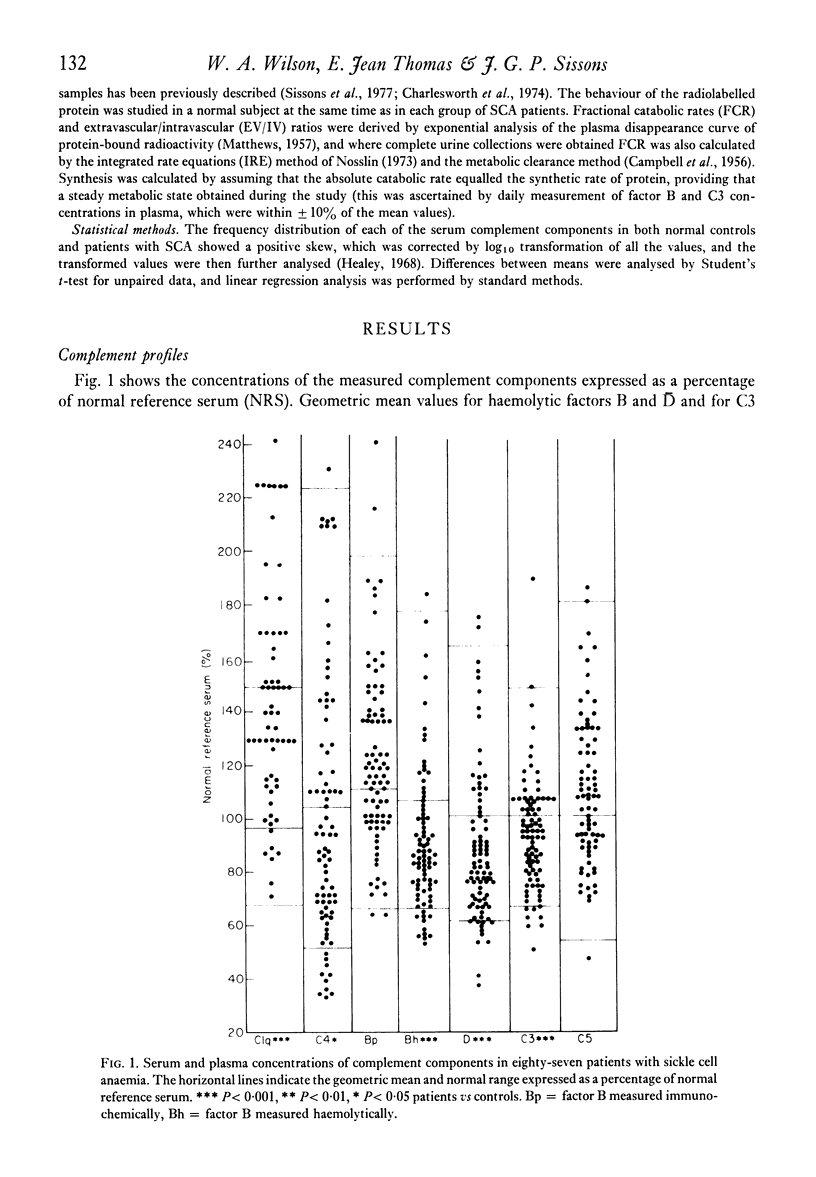
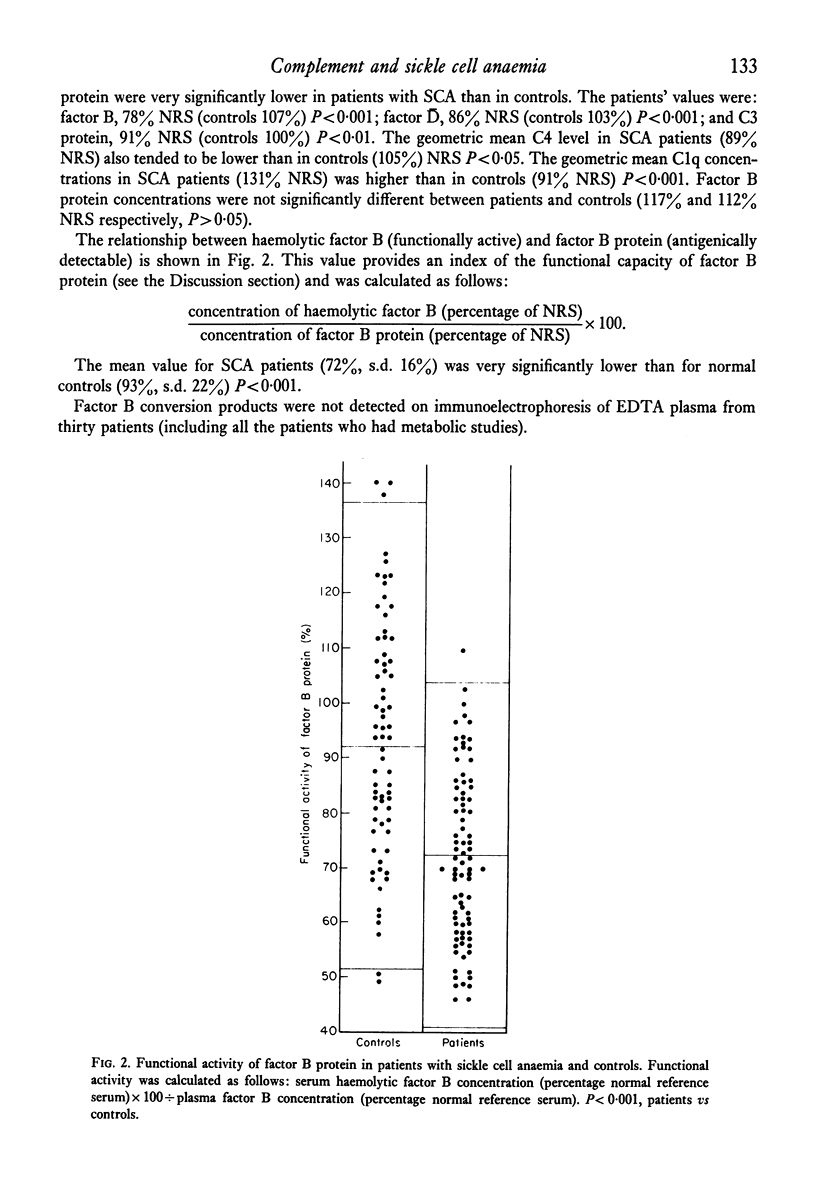
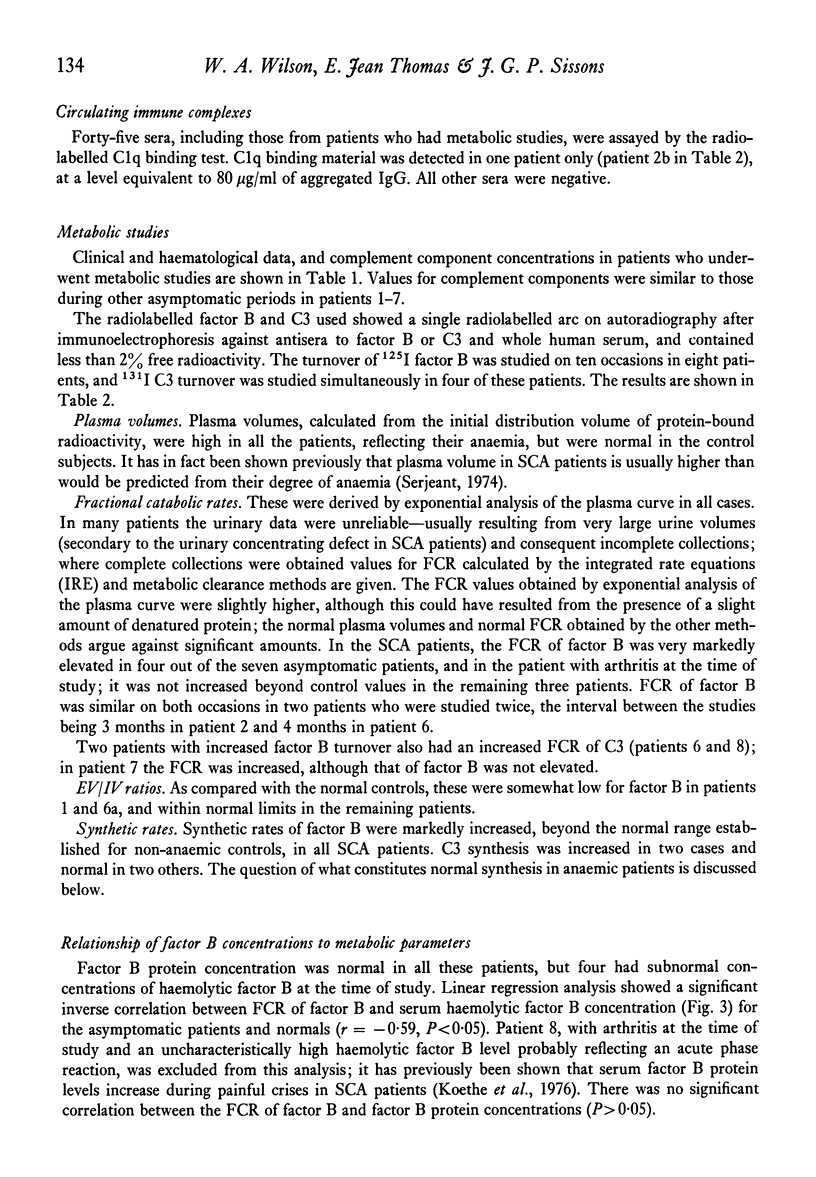
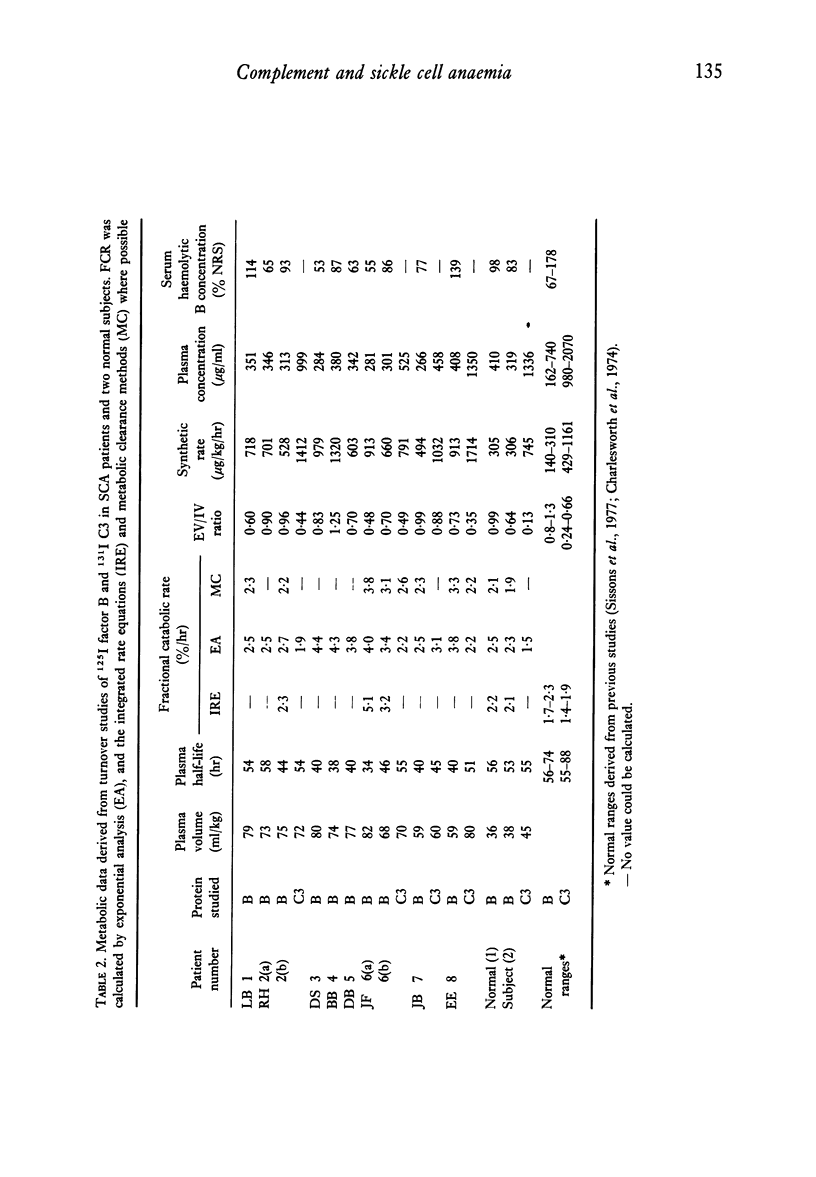
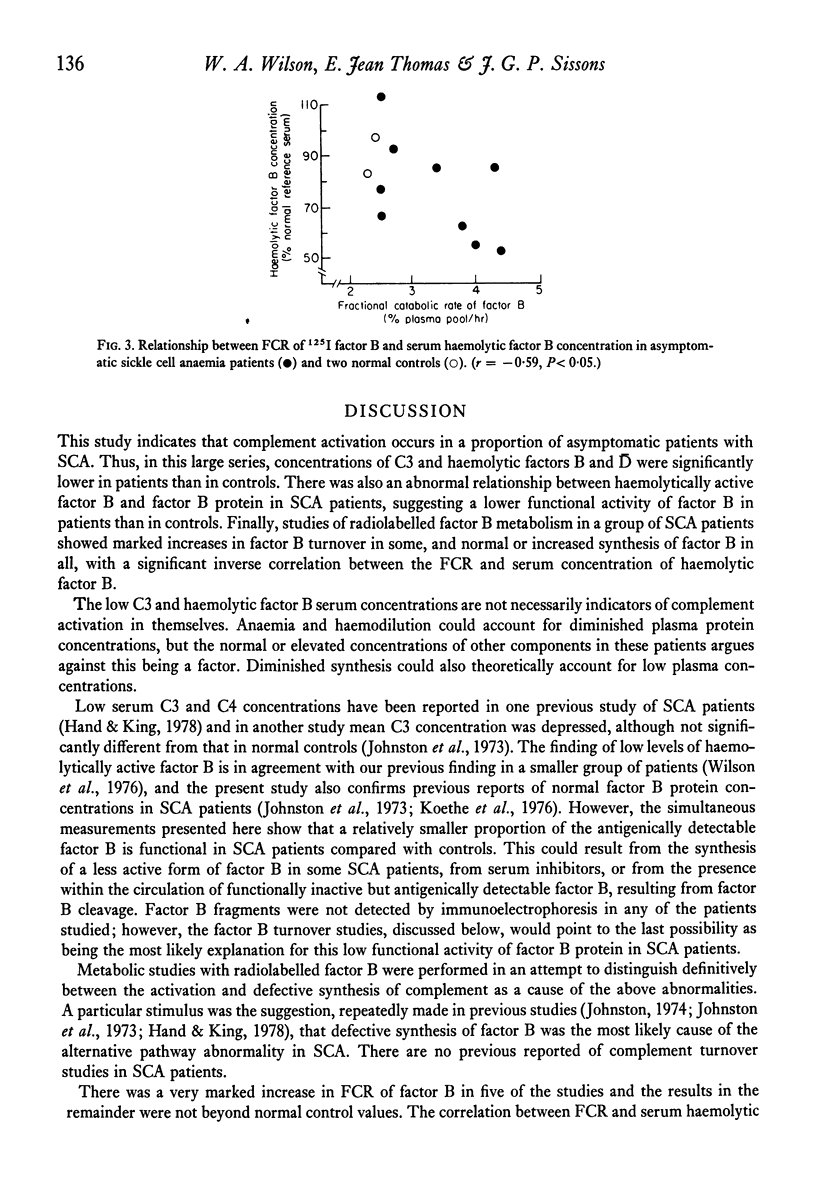
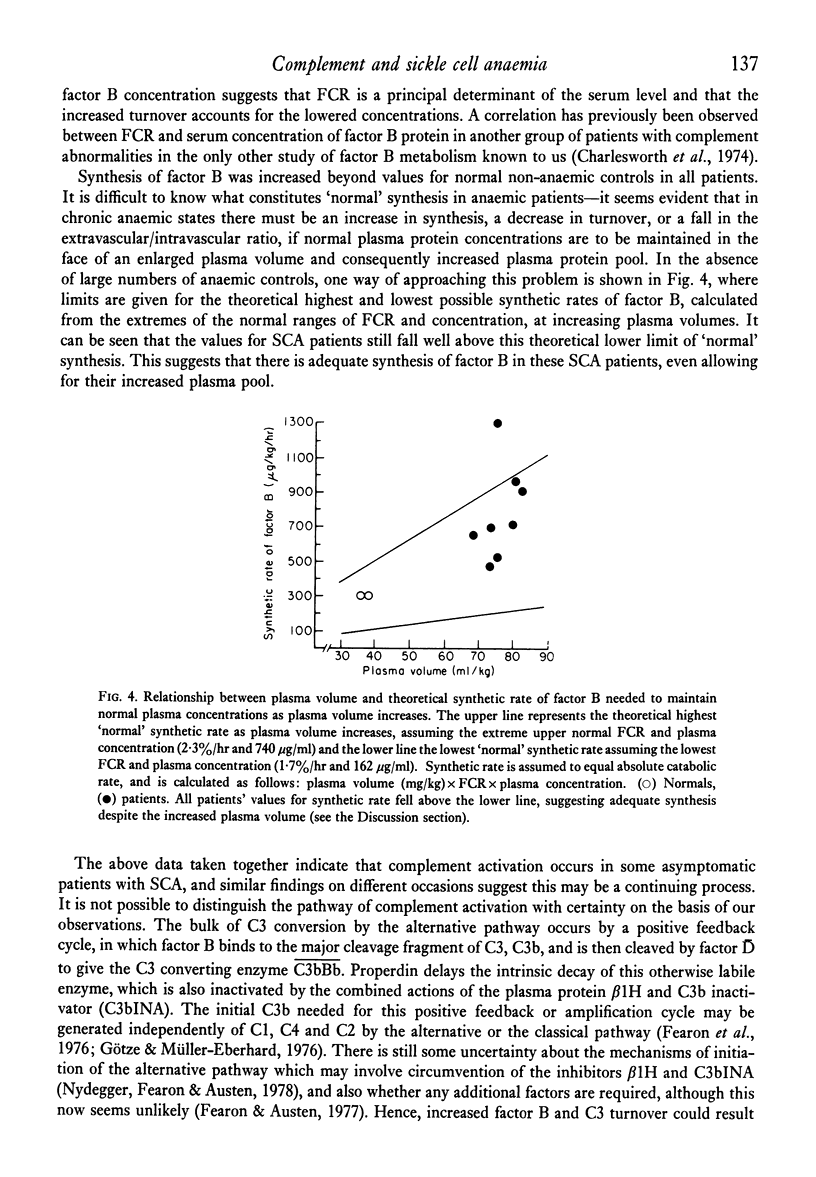
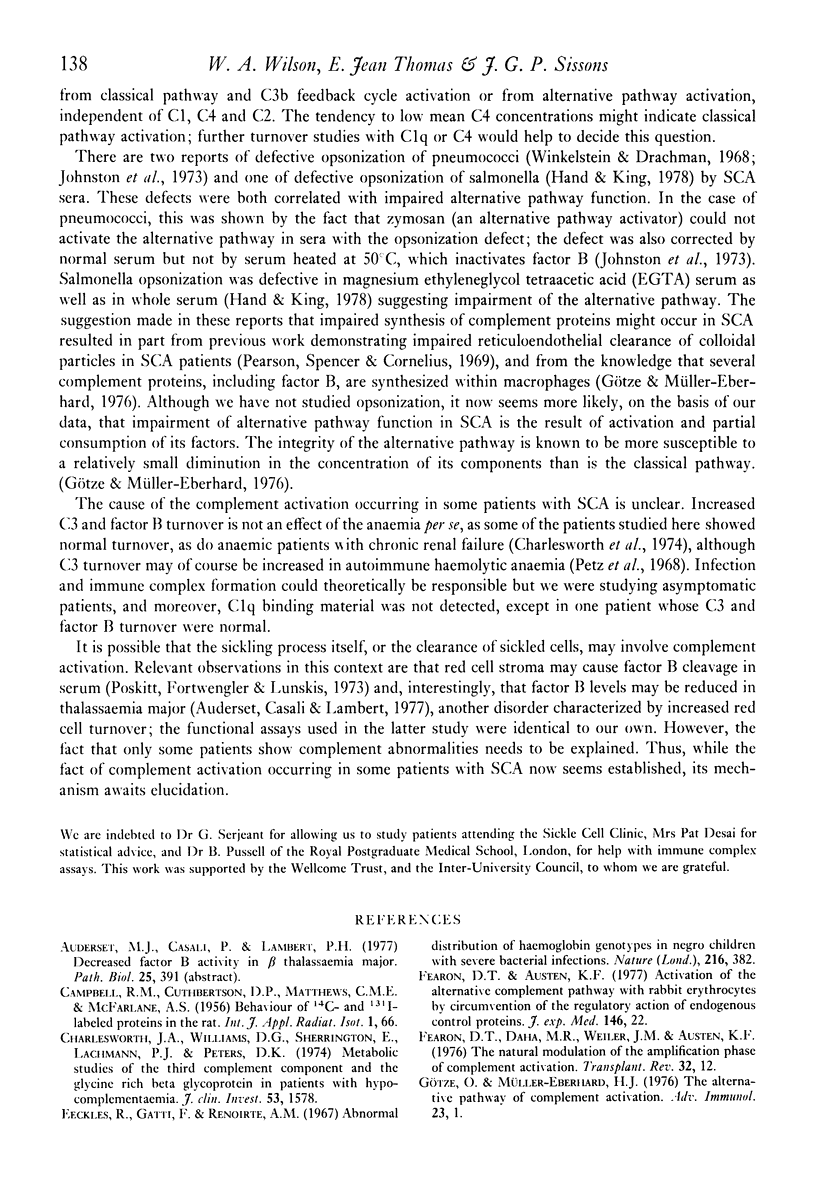
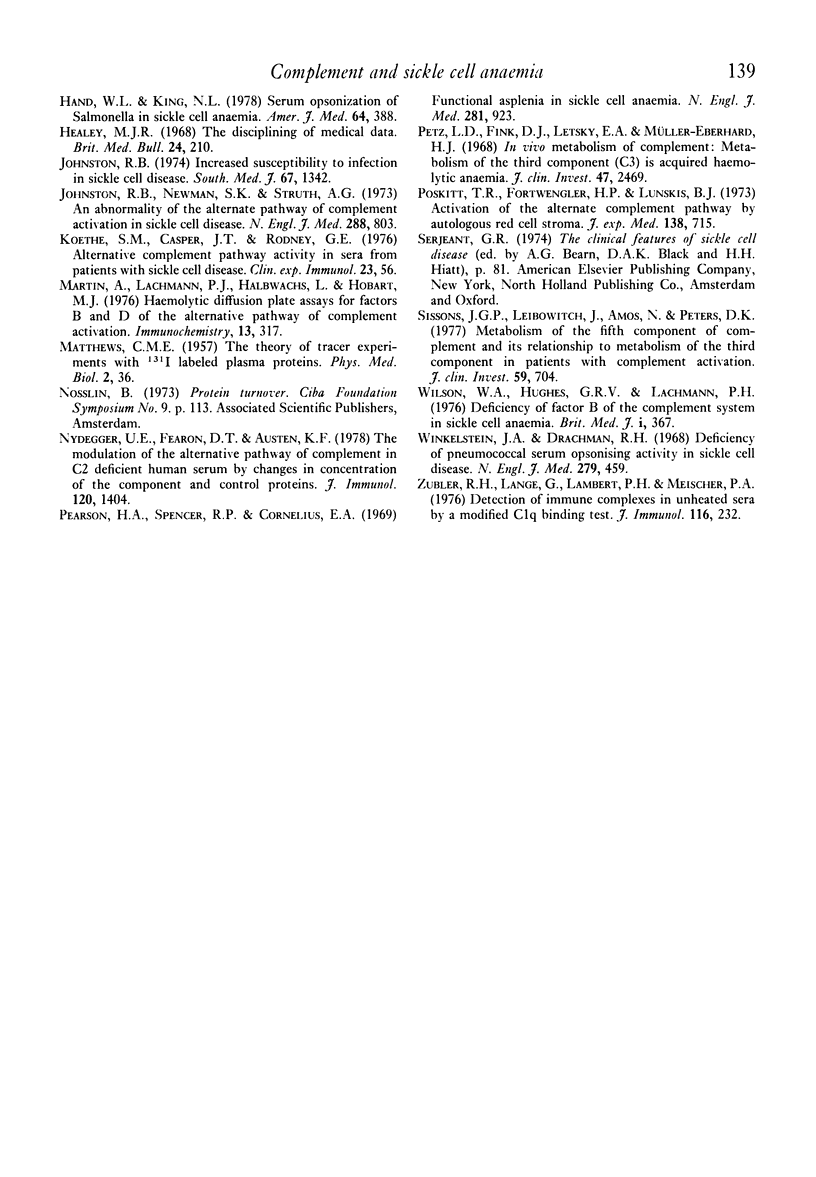
Selected References
These references are in PubMed. This may not be the complete list of references from this article.
- Charlesworth J. A., Williams D. G., Sherington E., Lachmann P. J., Peters D. K. Metabolic studies of the third component of complement and the glycine-rich beta glycoprotein in patients with hypocomplementemia. J Clin Invest. 1974 Jun;53(6):1578–1587. doi: 10.1172/JCI107708. [DOI] [PMC free article] [PubMed] [Google Scholar]
- Eeckels R., Gatti F., Renoirte A. M. Abnormal distribution of haemoglobin genotypes in Negro children with severe bacterial infections. Nature. 1967 Oct 28;216(5113):382–382. doi: 10.1038/216382a0. [DOI] [PubMed] [Google Scholar]
- Fearon D. T., Austen K. F. Activation of the alternative complement pathway with rabbit erythrocytes by circumvention of the regulatory action of endogenous control proteins. J Exp Med. 1977 Jul 1;146(1):22–33. doi: 10.1084/jem.146.1.22. [DOI] [PMC free article] [PubMed] [Google Scholar]
- Fearon D. T., Daha M. R., Weiler J. M., Austen K. F. The natural modulation of the amplification phase of complement activation. Transplant Rev. 1976;32:12–25. doi: 10.1111/j.1600-065x.1976.tb00226.x. [DOI] [PubMed] [Google Scholar]
- Hand W. L., King N. L. Serum opsonization of salmonella in sickle cell anemia. Am J Med. 1978 Mar;64(3):388–395. doi: 10.1016/0002-9343(78)90217-6. [DOI] [PubMed] [Google Scholar]
- Healy M. J. The disciplining of medical data. Br Med Bull. 1968 Sep;24(3):210–214. doi: 10.1093/oxfordjournals.bmb.a070637. [DOI] [PubMed] [Google Scholar]
- Johnston R. B., Jr Increased susceptibility to infection in sickle cell disease: review of its occurrence and possible causes. South Med J. 1974 Nov;67(11):1342–1348. doi: 10.1097/00007611-197411000-00018. [DOI] [PubMed] [Google Scholar]
- Johnston R. B., Jr, Newman S. L., Struth A. G. An abnormality of the alternate pathway of complement activation in sickle-cell disease. N Engl J Med. 1973 Apr 19;288(16):803–808. doi: 10.1056/NEJM197304192881601. [DOI] [PubMed] [Google Scholar]
- Koethe S. M., Casper J. T., Rodey G. E. Alternative complement pathway activity in sera from patients with sickle cell disease. Clin Exp Immunol. 1976 Jan;23(1):56–60. [PMC free article] [PubMed] [Google Scholar]
- MATTHEWS C. M. The theory of tracer experiments with 131I-labelled plasma proteins. Phys Med Biol. 1957 Jul;2(1):36–53. doi: 10.1088/0031-9155/2/1/305. [DOI] [PubMed] [Google Scholar]
- Martin A., Lachmann P. J., Halbwachs L., Hobart M. J. Haemolytic diffusion plate assays for factors B and D of the alternative pathway of complement activation. Immunochemistry. 1976 Apr;13(4):317–324. doi: 10.1016/0019-2791(76)90341-4. [DOI] [PubMed] [Google Scholar]
- Nosslin B. Analysis of disappearance time-curves after single injection of labelled proteins. Ciba Found Symp. 1972;9:113–130. doi: 10.1002/9780470719923.ch7. [DOI] [PubMed] [Google Scholar]
- Nydegger U. E., Fearon D. T., Austen K. F. The modulation of the alternative pathway of complement in C2-deficient human serum by changes in concentration of the component and control proteins. J Immunol. 1978 Apr;120(4):1404–1408. [PubMed] [Google Scholar]
- Pearson H. A., Spencer R. P., Cornelius E. A. Functional asplenia in sickle-cell anemia. N Engl J Med. 1969 Oct 23;281(17):923–926. doi: 10.1056/NEJM196910232811703. [DOI] [PubMed] [Google Scholar]
- Petz L. D., Fink D. J., Letsky E. A., Fudenberg H. H., Müller-Eberhard J. In vivo metabolism of complement. I. Metabolism of the third component (C'3) in acquired hemolytic anemia. J Clin Invest. 1969 Nov;47(11):2469–2484. doi: 10.1172/JCI105929. [DOI] [PMC free article] [PubMed] [Google Scholar]
- Poskitt T. R., Fortwengler H. P., Jr, Lunskis B. J. Activation of the alternate complement pathway by autologous red cell stroma. J Exp Med. 1973 Sep 1;138(3):715–722. doi: 10.1084/jem.138.3.715. [DOI] [PMC free article] [PubMed] [Google Scholar]
- Sissons J. G., Liebowitch J., Amos N., Peters D. K. Metabolism of the fifth component of complement, and its relation to metabolism of the third component, in patients with complement activation. J Clin Invest. 1977 Apr;59(4):704–715. doi: 10.1172/JCI108689. [DOI] [PMC free article] [PubMed] [Google Scholar]
- Wilson W. A., Hughes G. R., Lachmann P. J. Deficiency of factor B of the complement system in sickle cell anaemia. Br Med J. 1976 Feb 14;1(6006):367–369. doi: 10.1136/bmj.1.6006.367. [DOI] [PMC free article] [PubMed] [Google Scholar]
- Winkelstein J. A., Drachman R. H. Deficiency of pneumococcal serum opsonizing activity in sickle-cell disease. N Engl J Med. 1968 Aug 29;279(9):459–466. doi: 10.1056/NEJM196808292790904. [DOI] [PubMed] [Google Scholar]
- Zubler R. H., Lange G., Lambert P. H., Miescher P. A. Detection of immune complexes in unheated sera by modified 125I-Clq binding test. Effect of heating on the binding of Clq by immune complexes and application of the test to systemic lupus erythematosus. J Immunol. 1976 Jan;116(1):232–235. [PubMed] [Google Scholar]


